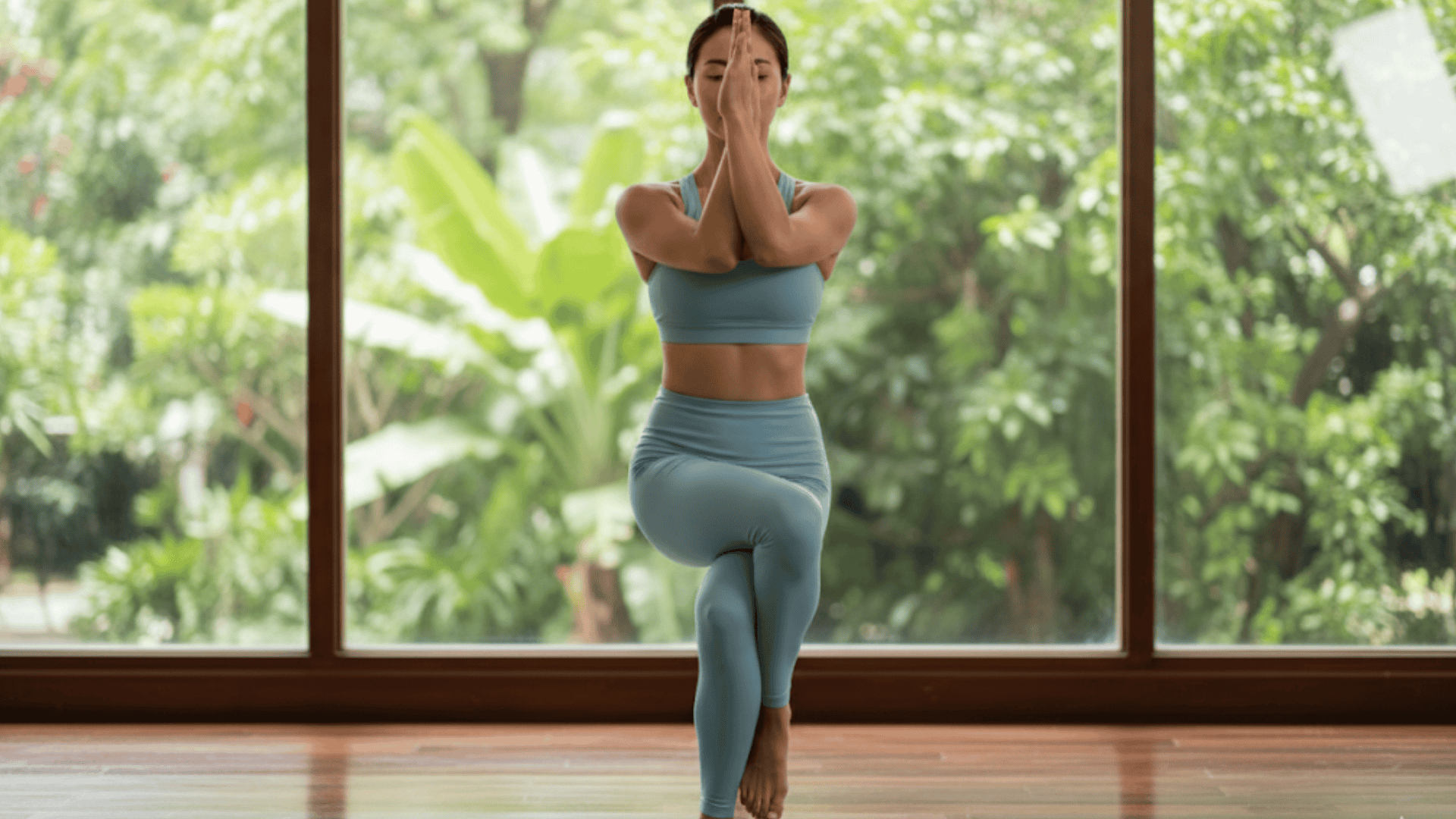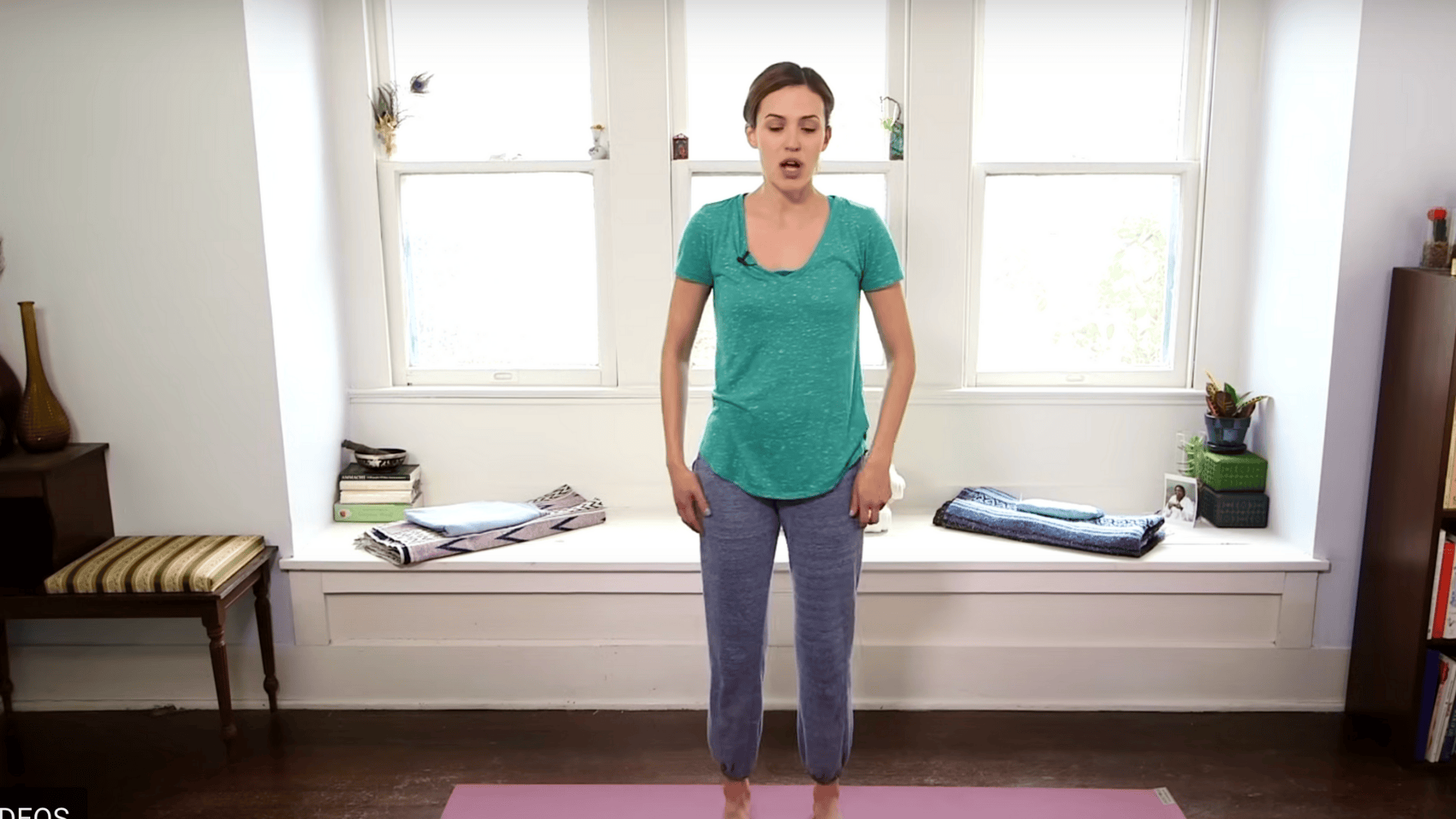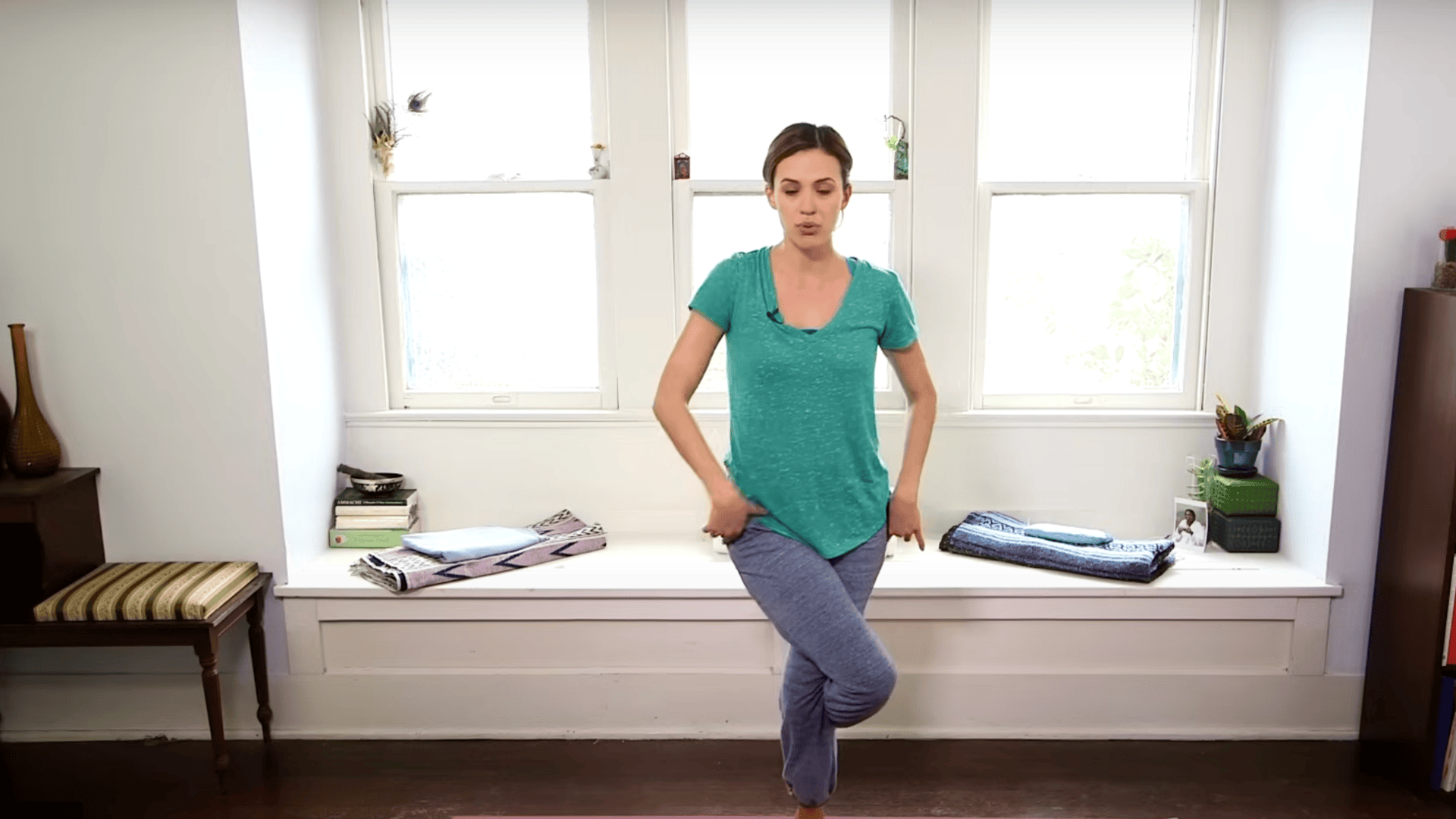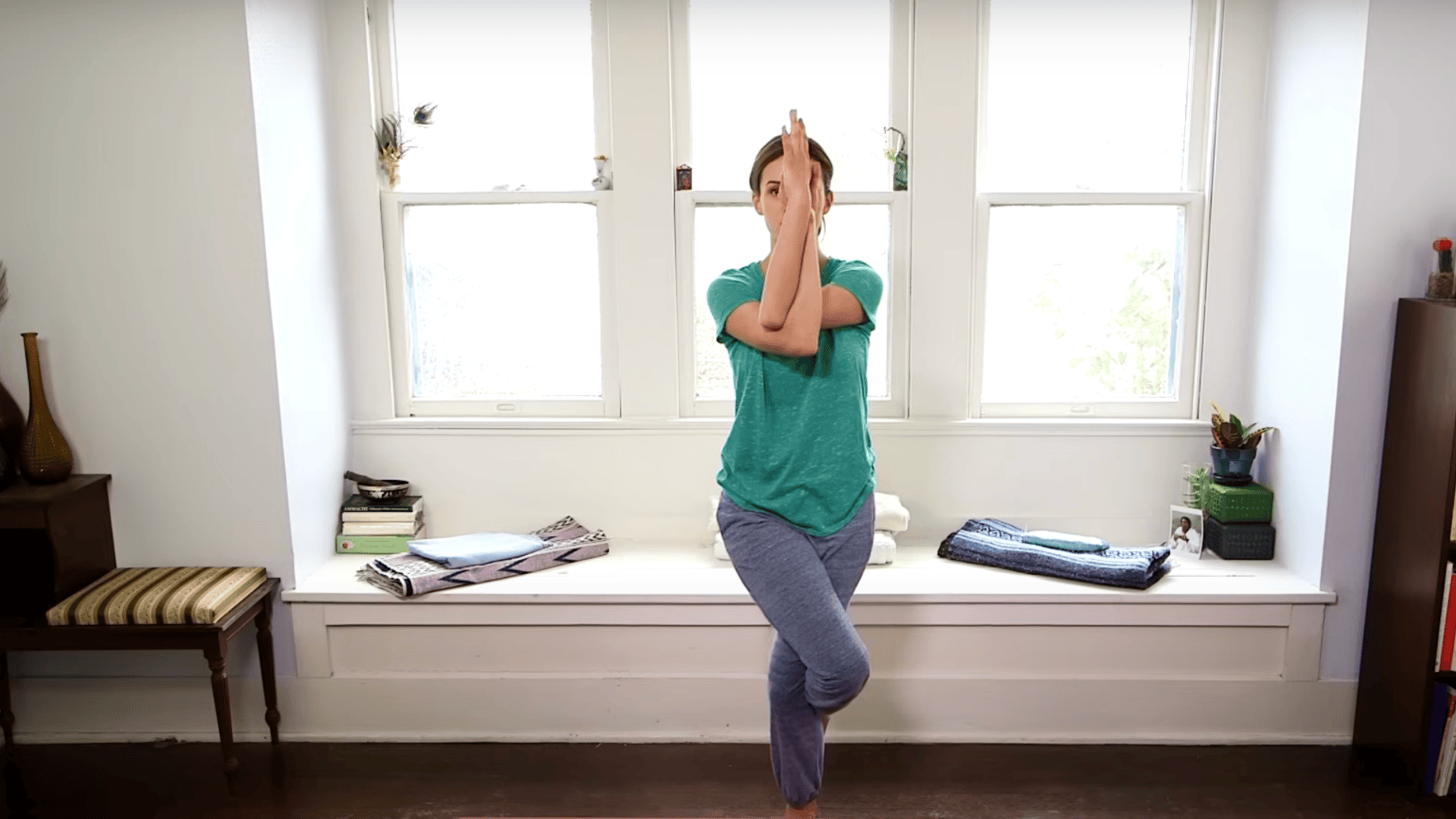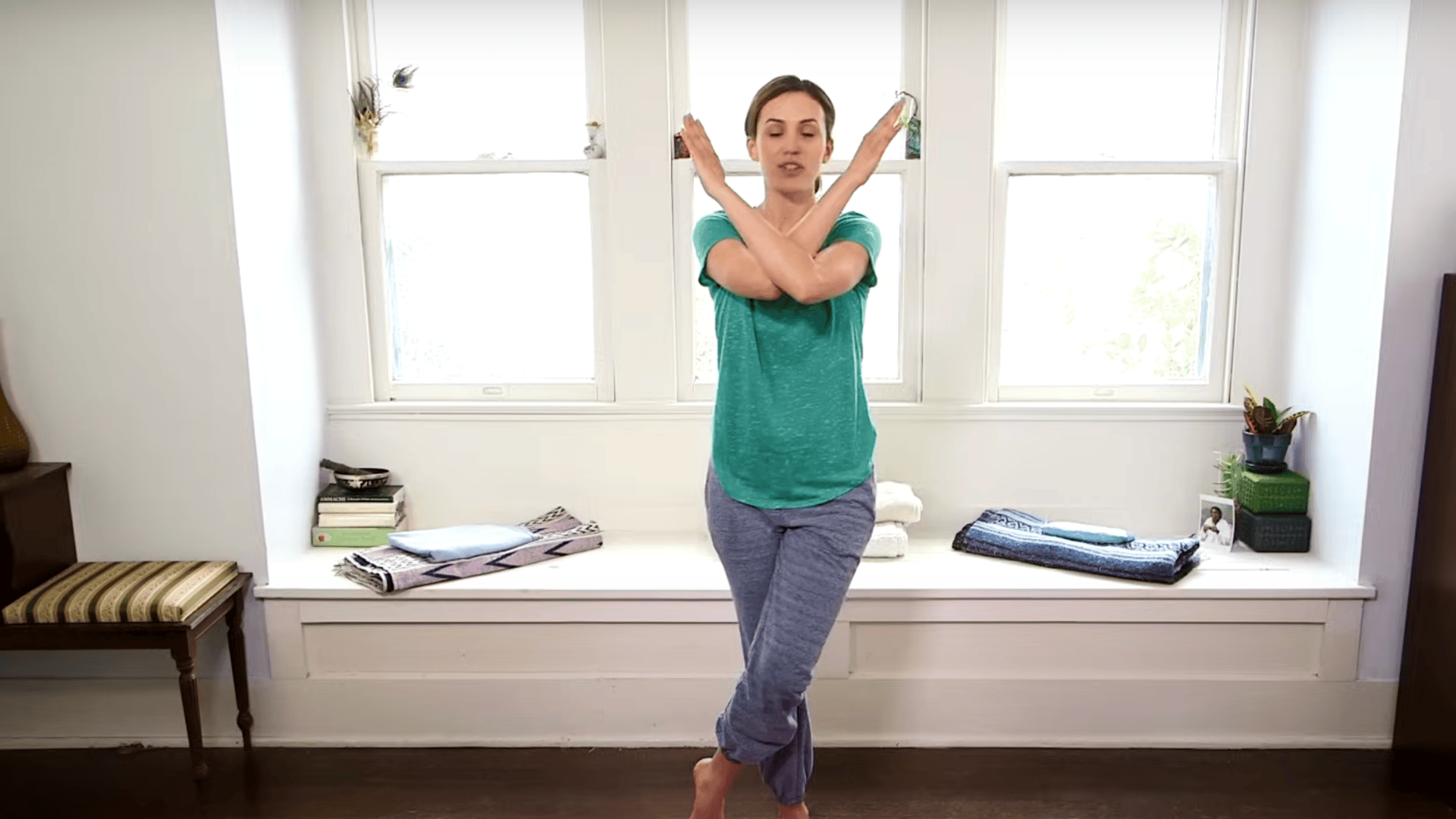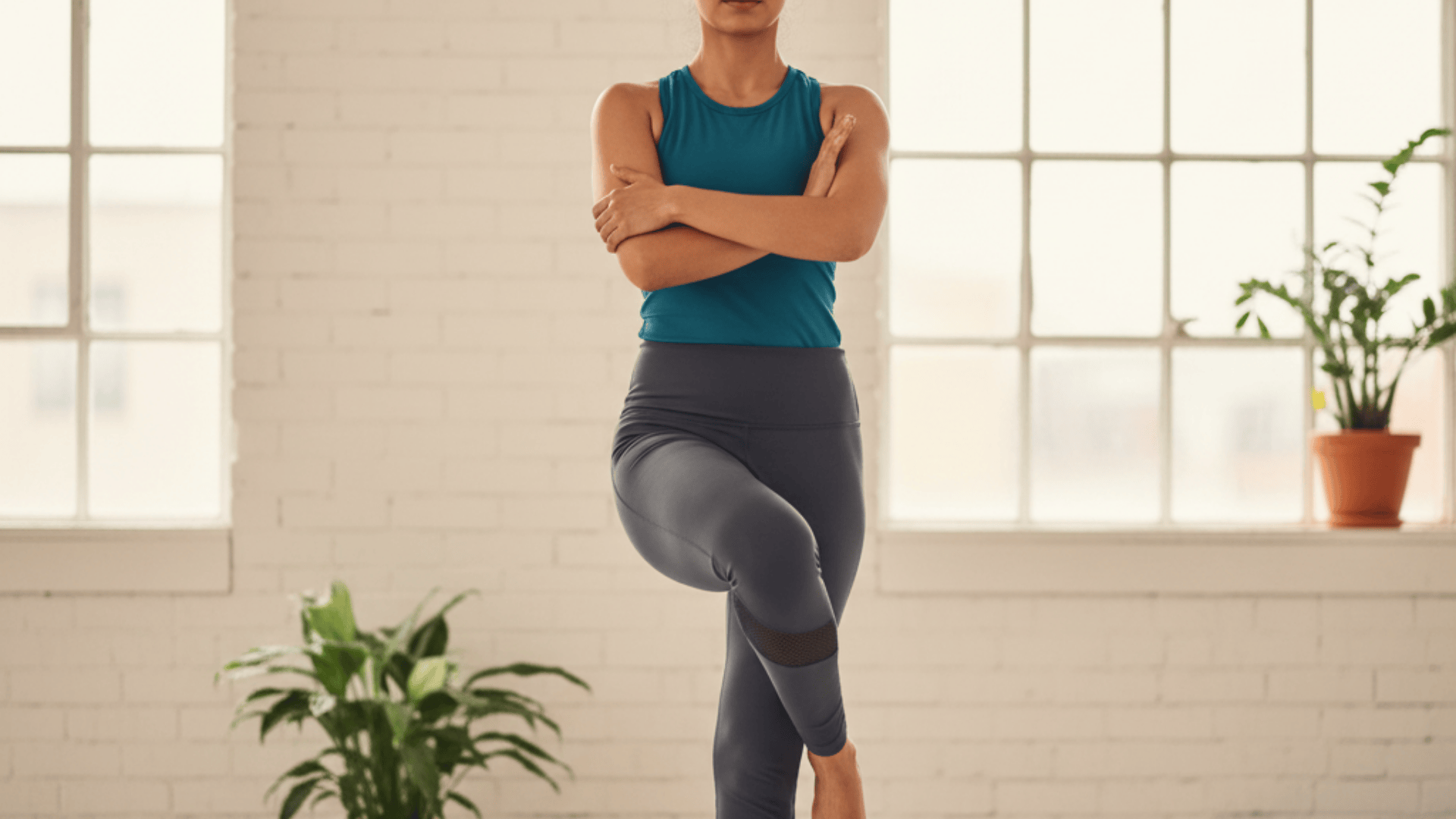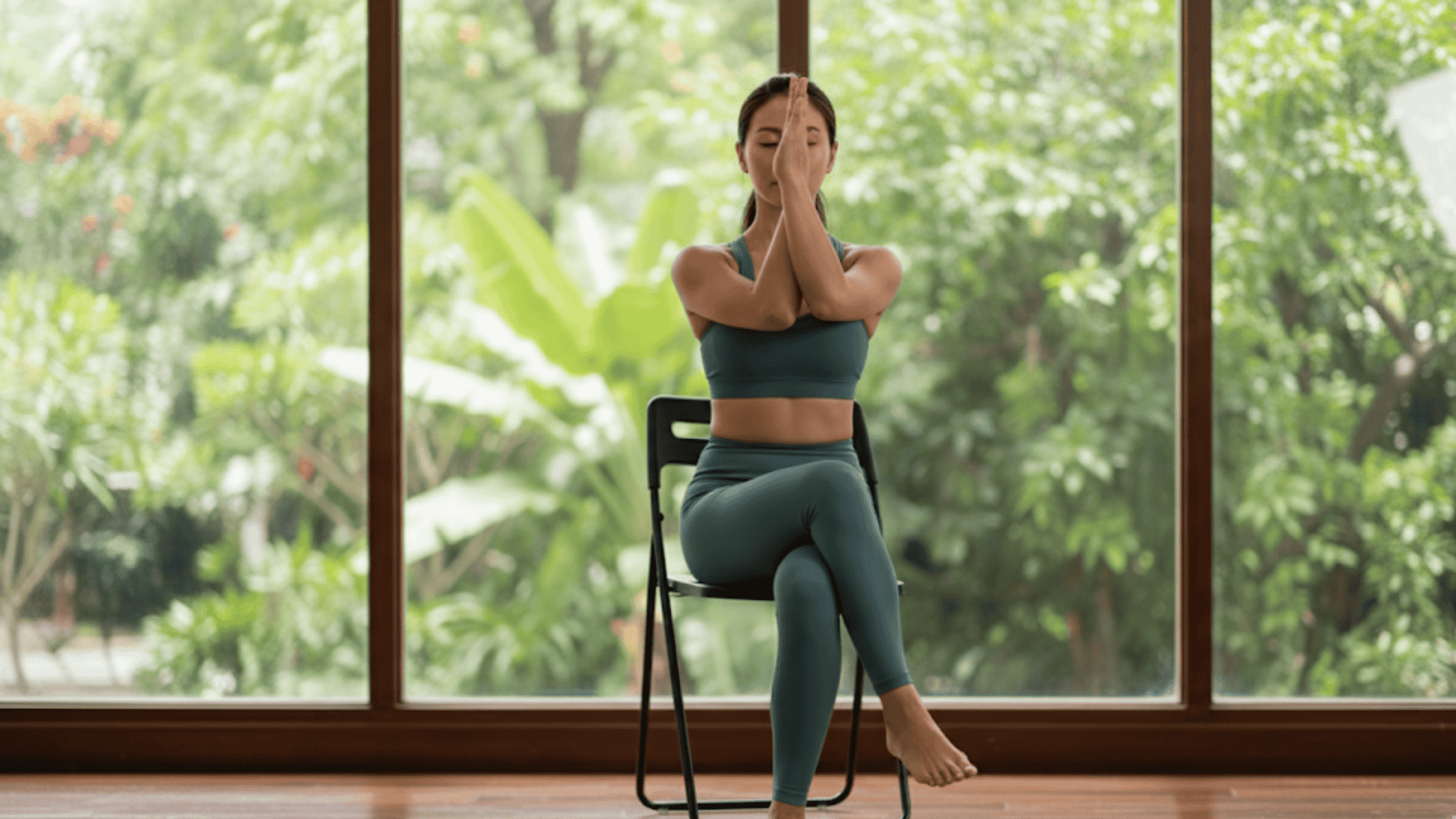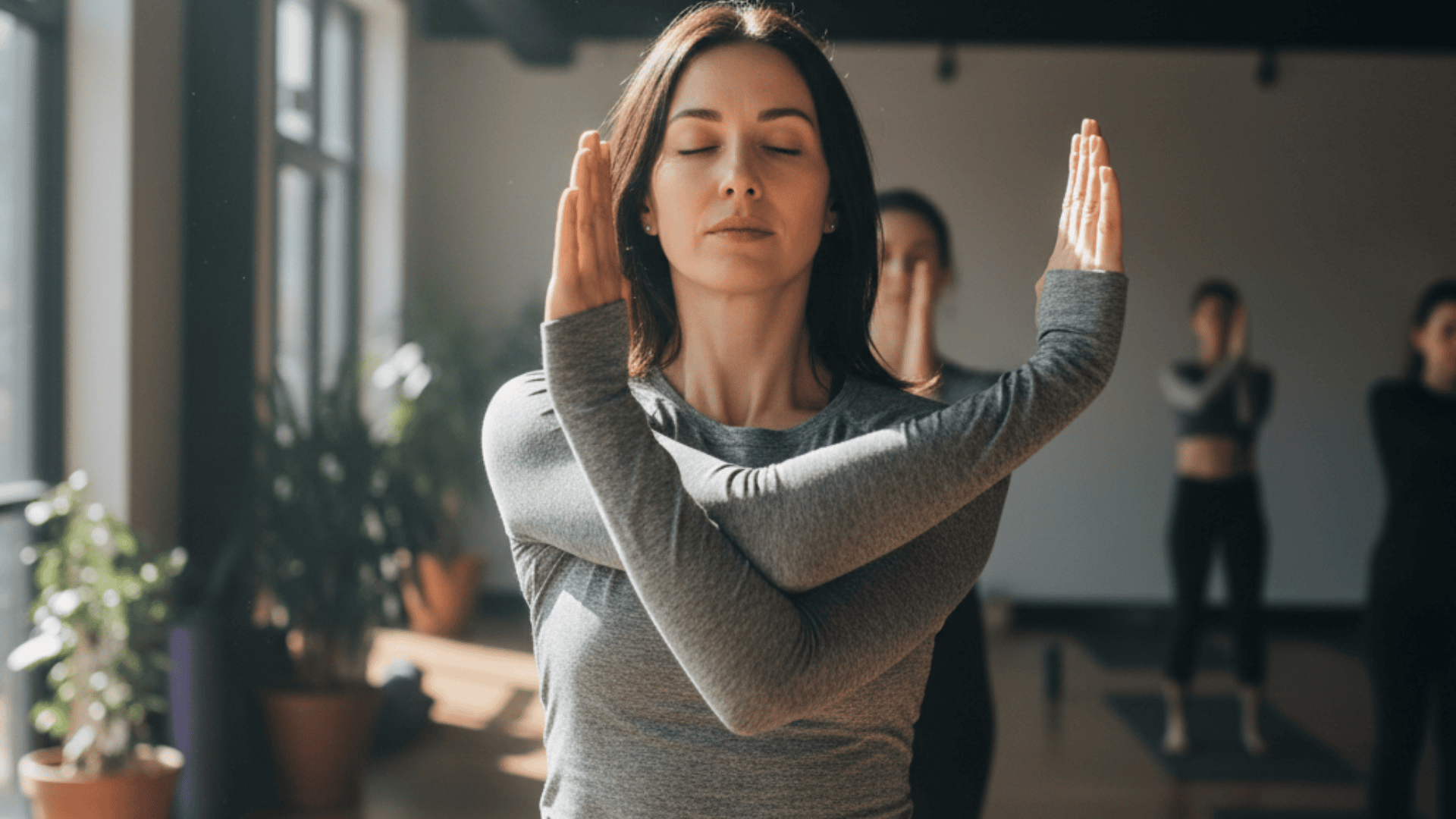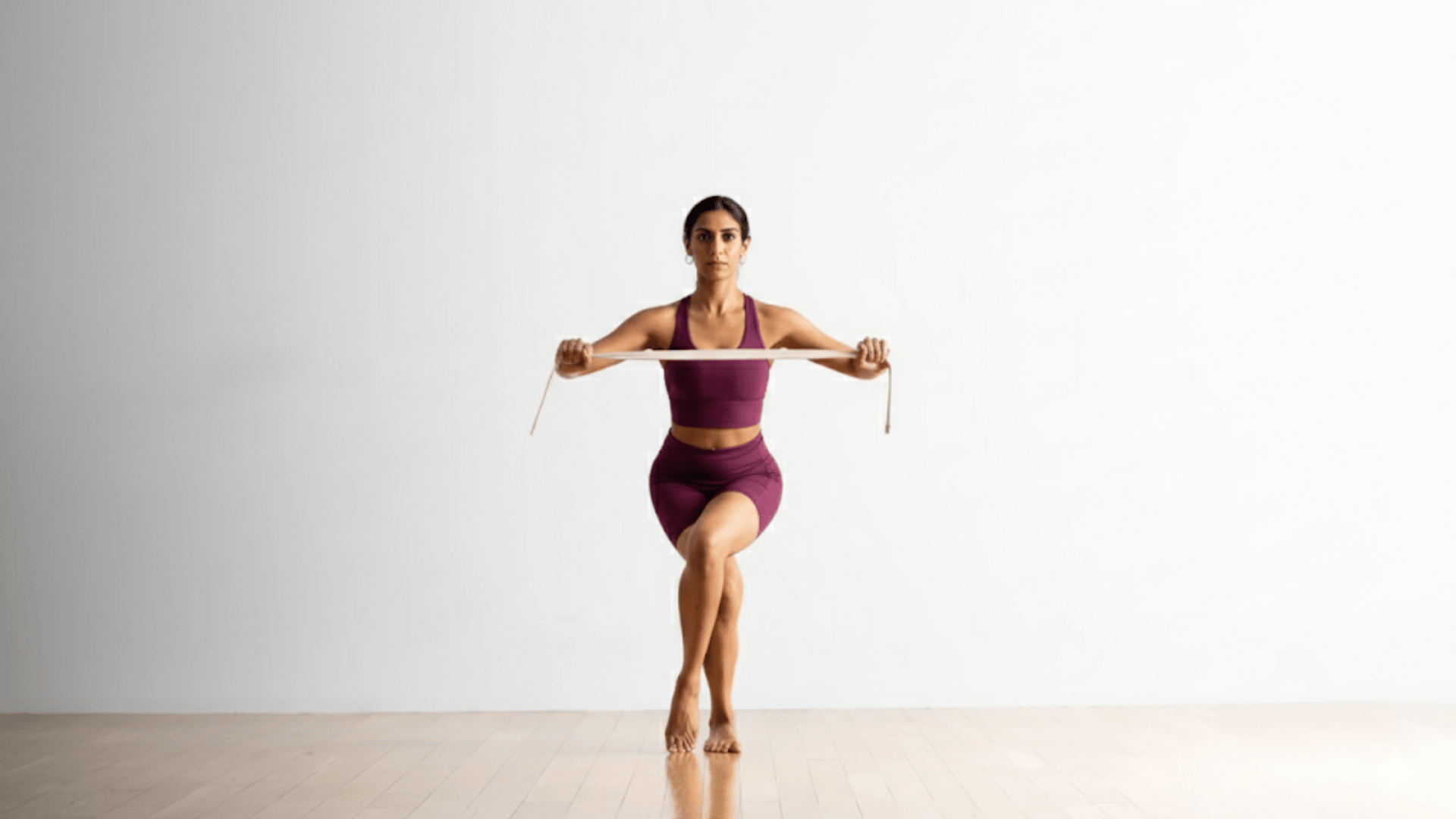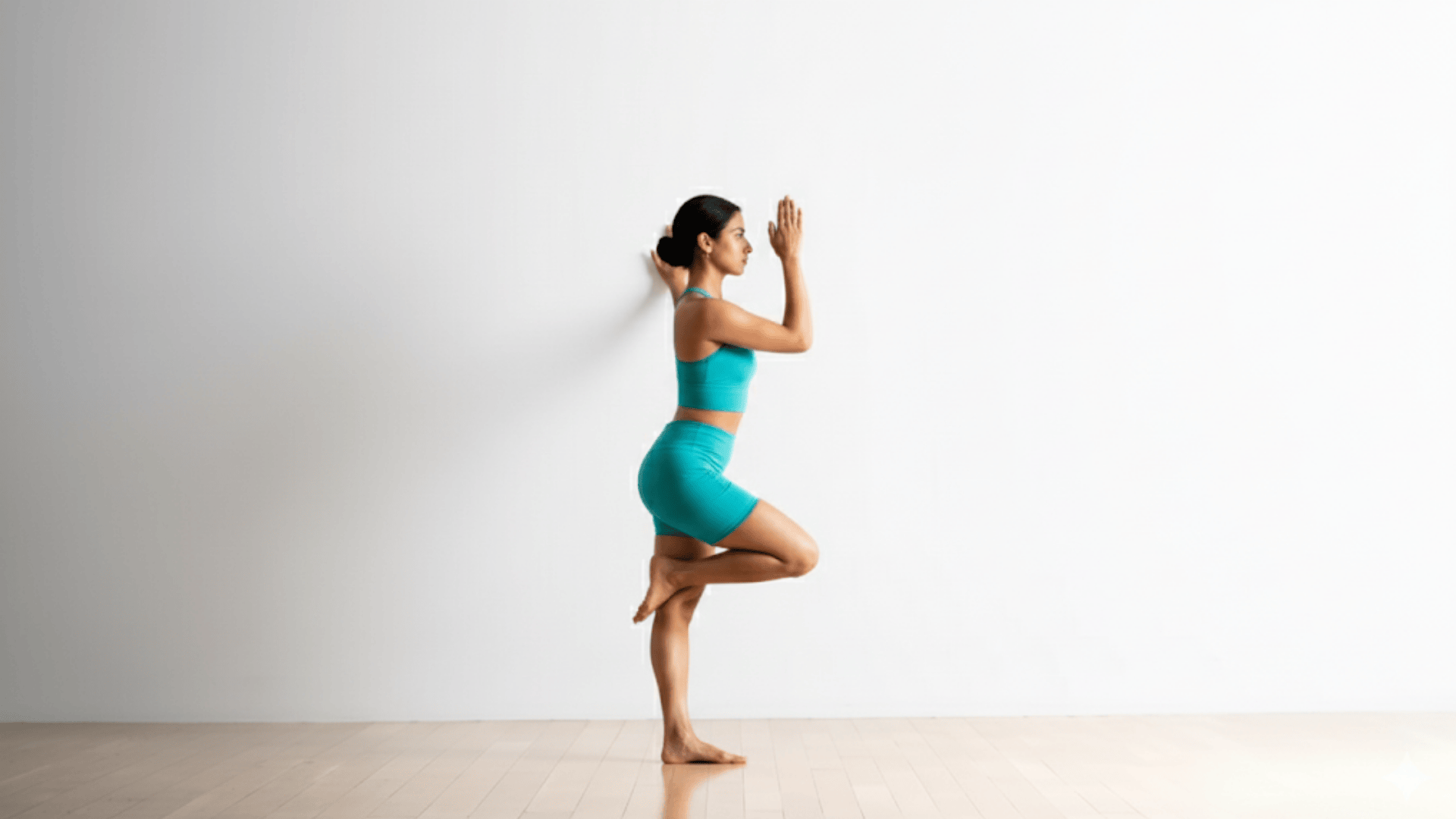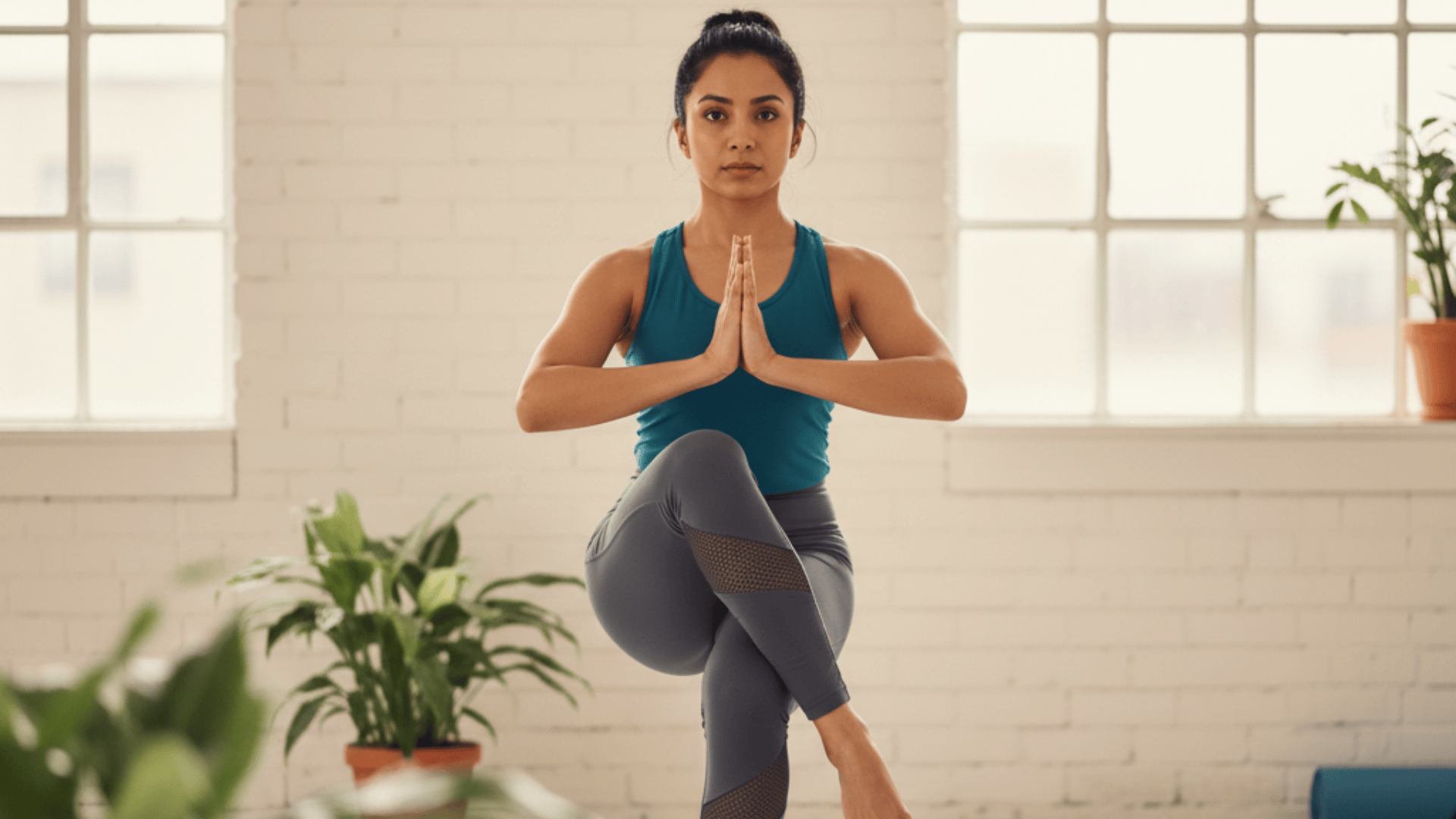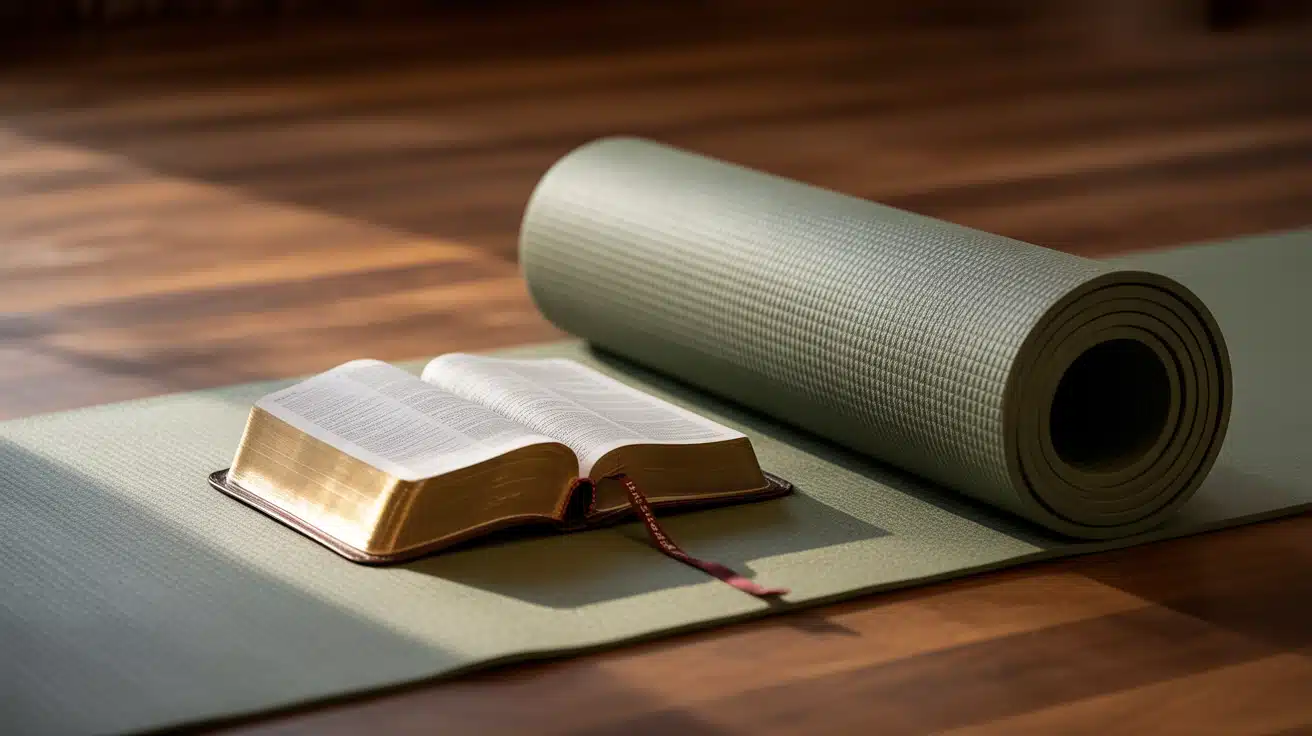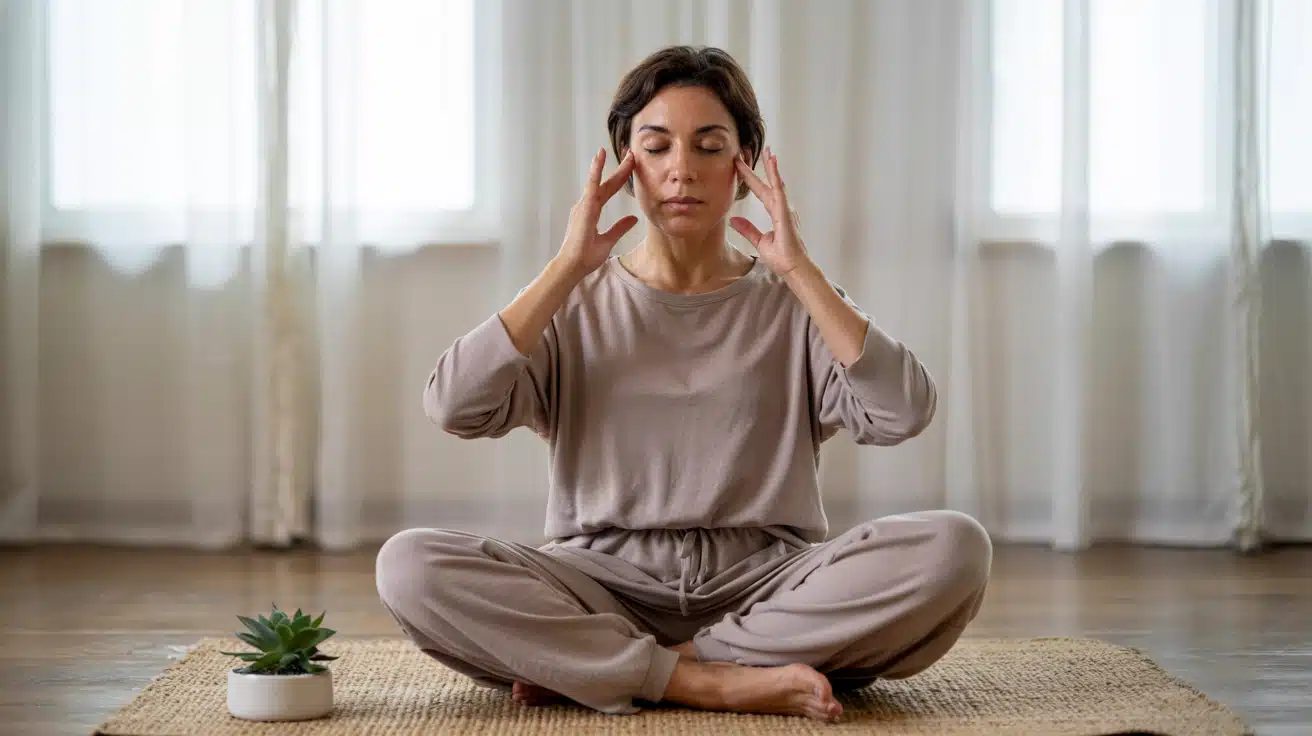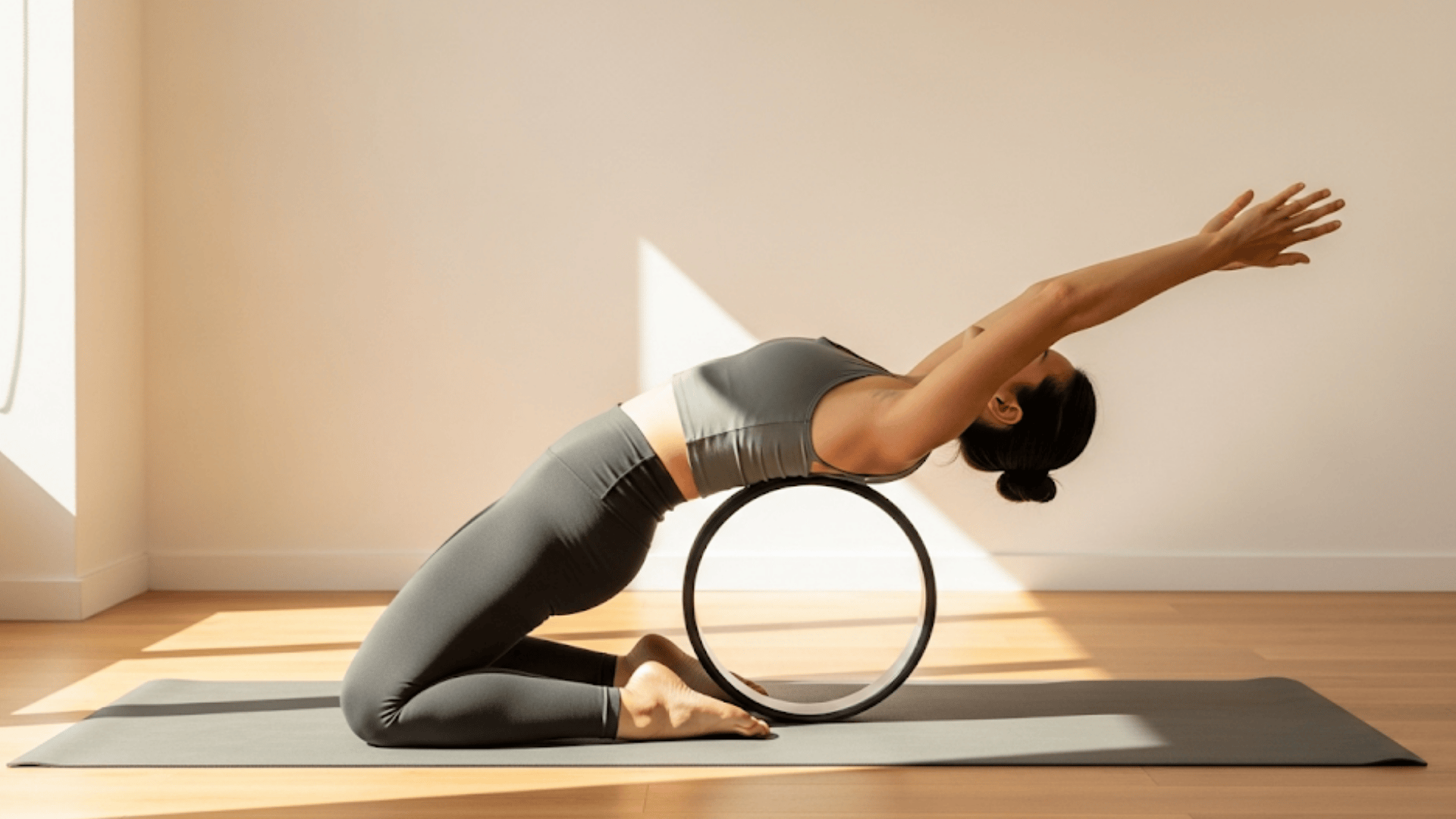Finding balance in yoga can feel impossible when you’re wobbling on one foot. Eagle Pose challenges even experienced practitioners with its twisted arms and wrapped legs.
This standing pose builds serious leg strength while stretching tight shoulders and back muscles. The Sanskrit name Garudasana originates from the mythical bird Garuda, renowned for its power and elegance.
Many students avoid Eagle Pose because it looks complicated. But with proper steps and modifications, anyone can master this beneficial posture.
In this guide, you’ll learn the exact step-by-step method to practice Eagle Pose safely. We’ll cover counter poses and variations to match your skill level.
You’ll also learn how to incorporate Eagle Pose into your daily routine for enhanced balance, stronger legs, and improved focus.
What is the Eagle Pose?
Eagle Pose, called Garudasana in Sanskrit, is a standing balance pose where you wrap your arms and legs around each other. This pose resembles an eagle perched on a tree branch.
It helps build strength in your legs while stretching your shoulders and back. The pose also requires focus and calm breathing to stay balanced.
Key Benefits of Eagle Pose
- Strengthens the Legs and Ankles. This pose works your thigh muscles, calves, and ankles to build strong, stable legs for better support.
- Improves Balance and Coordination. Holding Eagle Pose trains your brain and body to work in harmony, making you steadier and more aware.
- Stretches Shoulders and Upper Back. The twisted arm position opens tight shoulder muscles and releases tension from your upper spine area.
- Enhances Concentration and Mindfulness. Staying focused in this pose helps quiet your mind and improves your ability to concentrate on tasks.
- Stimulates Circulation and Energy Flow. The wrapping motion helps blood flow more efficiently through your body, especially around joints and muscles.
Step-by-Step Guide to Practicing Eagle Pose
Follow this simple step-by-step guide to master Eagle Pose (Garudasana) with proper alignment, balance, and focus.
Preparatory warm-up for eagle pose:
| Exercise | Instructions |
|---|---|
| Shoulder Rolls | Roll your shoulders backward 5 times, then forward 5 times to release tension. |
| Arm Across Chest Stretch | Gently pull one arm across the chest, hold for 15 seconds per side. |
Step 1: Mountain Pose
Stand tall with feet hip-width apart and arms at your sides. Feel your weight evenly spread across both feet.
Take three deep breaths to center yourself and find your balance. This strong foundation helps you transition smoothly into Eagle Pose.
Step 2: Cross Your Thighs
Lift your left thigh up and cross it over your right thigh. Press your thighs together firmly to create a stable base.
Keep your standing knee slightly bent to maintain balance. The tighter you squeeze your legs, the more stable you’ll feel.
Step 3: Cross Your Arms
Extend both arms forward at shoulder height, then cross your right arm over your left. Bend both elbows and try to bring your palms together.
If your palms don’t touch, press the backs of your hands together instead. This arm position helps improve shoulder flexibility over time.
Step 4: Hold and Release
Stay in the pose for three to five slow, deep breaths. Focus on one point in front of you to help maintain your balance.
When ready to exit, slowly release your arms first, then carefully lower your lifted leg. Repeat the entire sequence on the opposite side for balanced practice.
Video Tutorial
I’d like to give credit to Yoga With Adriene for their informative video, which served as a reference for this guide.
Key Alignment Tips for Eagle Pose
Learn essential alignment tips to stay balanced, safe, and effective while practicing Eagle Pose.
- Keep standing with a soft knee, not locked. Bend your standing knee slightly to avoid strain and maintain better balance throughout the pose.
- Engage core muscles to protect the lower back. Pull your belly button toward your spine to support your lower back and improve stability.
- Shoulders away from ears, elbows lifted. Drop your shoulders down and lift your elbows up to create space and prevent neck tension.
- Maintain gaze (drishti) for balance. Pick one steady point in front of you and keep your eyes focused on it to help maintain your balance.
- Modifications: resting toes on the floor, using a strap for arms. Use these helpful tools when you’re learning or if your body needs extra support during practice.
Variations and Modifications of Eagle Pose
Explore beginner-friendly adjustments and advanced variations of Eagle Pose to suit every level of yoga practice.
1. Beginner Eagle Pose
Keep your lifted leg’s toes touching the floor, rather than hooking behind your calf. This gives you extra support while you learn to balance on one foot.
Focus on squeezing your thighs together and getting comfortable with the arm position first. This version helps you build confidence before trying the full pose.
2. Chair Eagle Pose
Sit tall in a sturdy chair and cross your legs at the thighs. Wrap your arms in the same eagle position while keeping your back straight.
This seated version allows you to practice the pose safely without worrying about maintaining balance. It’s perfect for desk breaks, older adults, or anyone with standing difficulties.
3. Half Eagle Arms
Practice only the arm wrapping part while standing normally with both feet on the ground. Cross your arms at the elbows and try to bring your palms together.
Hold this position for several breaths to stretch your shoulders and upper back. This warm-up prepares your shoulders for the full pose later.
4. Eagle Pose with Strap
If your palms don’t touch when you cross your arms, hold a yoga strap between your hands to maintain a gentle stretch. The strap helps bridge the gap as you work on improving your shoulder flexibility over time.
Keep gentle tension on the strap and focus on lifting your elbows away from your chest. This tool makes the pose accessible for people with tight shoulders.
5. Eagle Pose with Wall Support
Stand close to a wall so you can lightly touch it for balance when needed. Practice the full pose while knowing the wall is there for support.
Use the wall minimally, just enough to feel secure while you build strength and stability. This modification helps nervous beginners gain confidence in their balance.
6. Advanced Full Eagle Pose
Sink deeper into a squat position until your thighs are almost parallel to the floor. Hold this challenging version for longer periods to build serious leg strength.
Keep your spine straight and core engaged throughout the deeper squat. This variation tests your endurance and takes the pose to the next level.
Preparatory and Counter Poses for Eagle Pose
Learn the essential warm-up and counter poses that prepare your body for Eagle Pose and help restore balance afterward.
| Category | Yoga Poses | Purpose |
|---|---|---|
| Preparatory Poses | Chair Pose (Utkatasana) | Warms up legs and strengthens thighs for balance. |
| Standing Forward Fold (Uttanasana) | Stretches hamstrings and relaxes the spine before balancing. | |
| Shoulder Stretch | Open shoulders and upper back to prepare for Eagle arms. | |
| Counter Poses | Mountain Pose (Tadasana) | Realigns posture and restores balance after twisting. |
| Standing Forward Fold (Uttanasana) | Releases lower back and hamstrings after the hold. | |
| Seated Twist (Ardha Matsyendrasana) | Gently detoxifies and unwinds the spine. |
How to Incorporate Eagle Pose into Your Yoga Routine
Eagle Pose works well in a standing balance sequence alongside Tree Pose and Warrior III to challenge your stability and focus.
Practice it during your morning routine to sharpen concentration and prepare your mind for the day ahead.
You can also include Eagle Pose in evening sessions to release tension in your shoulders and back that has accumulated throughout the day.
The pose naturally integrates into most yoga flows, adding both physical challenge and mental calm to your practice.
Conclusion
Eagle Pose offers a complete package of benefits that go beyond simple stretching. This single pose strengthens your legs, improves balance, and releases tension in your shoulders simultaneously.
The mental focus required helps calm your mind and build concentration skills you can use off the mat.
Start with beginner modifications and work your way up to the full pose. Remember to keep your standing knee soft, engage your core, and breathe steadily throughout the exercise.
Whether you practice Eagle Pose in the morning for focus or evening for tension release, consistency matters most.
Your balance and body awareness will improve with regular practice. Each time you hold this pose, you’re building both physical strength and mental resilience.
Ready to master Eagle Pose? Try adding it to your next yoga session and notice how your balance transforms.

